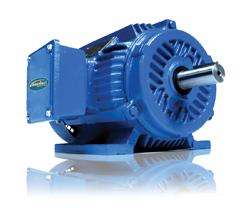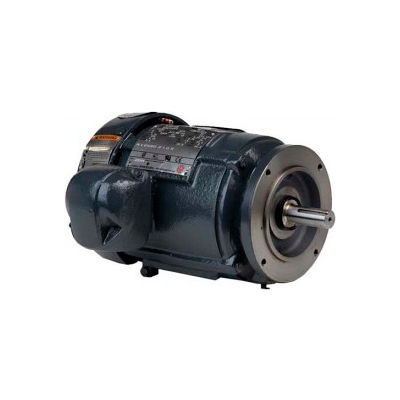 For applications that require hygienic or sanitized components to withstand high-pressure washdowns, like in the food and beverage, medical or pharmaceutical industries, totally enclosed, non-ventilated (TENV) motors are ideal. Our team has collected thousands of questions that people keep asking in forums, blogs and in Google questions. Type d (Exd): Explosionproof/Flameproof Enclosure. General Purpose Industrial Electric Motors, TEFC (Totally Enclosed Fan Cooled) Explosion-Proof Motor General Purpose Industrial Electric Motors, Enclosure Type: TEFC (Totally Enclosed Fan Cooled), Special Motor Construction: Explosion-Proof Motor, 15HP Electric Motor Baldor D98251029 230/460 V 3530 Rpm 3PH Frame 254T. 6"G'v@sW.>94>a
For applications that require hygienic or sanitized components to withstand high-pressure washdowns, like in the food and beverage, medical or pharmaceutical industries, totally enclosed, non-ventilated (TENV) motors are ideal. Our team has collected thousands of questions that people keep asking in forums, blogs and in Google questions. Type d (Exd): Explosionproof/Flameproof Enclosure. General Purpose Industrial Electric Motors, TEFC (Totally Enclosed Fan Cooled) Explosion-Proof Motor General Purpose Industrial Electric Motors, Enclosure Type: TEFC (Totally Enclosed Fan Cooled), Special Motor Construction: Explosion-Proof Motor, 15HP Electric Motor Baldor D98251029 230/460 V 3530 Rpm 3PH Frame 254T. 6"G'v@sW.>94>a
Generally limited in nature being solely used in fan/blower applications where the motor is located with the air stream.  EExd is used by all EU. Motors that satisfy UL explosion proof certification are clearly identifiable by a UL listing identification plate, affixed to the motor enclosure. Electric motors have innumerable applications. Get product announcements, news posts, and other WorldWide Electric content sent straight to your inbox.
EExd is used by all EU. Motors that satisfy UL explosion proof certification are clearly identifiable by a UL listing identification plate, affixed to the motor enclosure. Electric motors have innumerable applications. Get product announcements, news posts, and other WorldWide Electric content sent straight to your inbox.  tefc vac 2hp 1800 hazardous efficiency i512 145t Explosion Proof motors are certified for NEMA Class 1, Div. Approval listings are available for Class I (Gas) and or Class II (Dust) hazardous environments. Informa Markets, a trading division of Informa PLC.
tefc vac 2hp 1800 hazardous efficiency i512 145t Explosion Proof motors are certified for NEMA Class 1, Div. Approval listings are available for Class I (Gas) and or Class II (Dust) hazardous environments. Informa Markets, a trading division of Informa PLC.
One technique that is routinely used to mitigate the risk of a dust explosion is the removal of potential ignition sources. All 115v-230v motors have a built-in switch for turning the units on and off.
Yet, application suitability is often determined by a passive mechanical part the motor enclosure. If any of the five items identified in the pentagon are removed from the pentagon, an explosion can be prevented. Class I materials are flammable gases; Class II materials are pervasive, flammable dusts. TEFC (Totally Enclosed, Fan Cooled) motors and ODP (Open Drip -proof) motors can be used in Division 2 locations provided they do not have ignition sources such as arc-producing brushes or switching mechanisms. 1 area? This means that the motor is dust tight, and has a moderate water seal as well. PetroWiki. Division 2 specifies that these flammable materials are handled, processed, or used in the defined hazardous location, but are not normally present in concentrations high enough to be ignitable. Additionally, the light-duty ODP enclosure results in a lightweight motor, enhancing portability. explosion baldor 284t tefc rpm nema tefc 56c
Potential ignition sources include, but are not limited to, mechanical ignition sources such as mechanical sparks and frictional heating, chemical ignition sources such as self-heating, spontaneous combustion, or other exothermic reactions, and electrical ignition sources such as static electricity and electrical equipment. 2022 WorldWide Electric. Two questions that are frequently asked by facility personnel regarding the choice or appropriateness of a given motor are: Recall that the NECs definition of explosion proof equipment is equipment enclosed in a case that is capable of withstanding an explosion of a specified gas or vapor that may occur within it and of preventing the ignition of a specified gas or vapor surrounding the enclosure by sparks, flashes, or explosion of the gas or vapor within and that operates at such an external temperature that a surrounding flammable atmosphere will not be ignited thereby6, but the definition of dust-ignition proof equipment is equipment enclosed in a manner that excludes dusts and does not permit arcs, sparks, or heat otherwise generated or liberated inside of the enclosure to cause ignition of exterior accumulations or atmospheric suspensions of a specified dust on or in the vicinity of the enclosure.7 Finned enclosures are common, as are stainless steel materials to improve corrosion resistance.  Class I areas are those where an explosion or fire hazard exists due to the presence of flammable gases, flammable liquid-produced vapors, or combustible liquid-produced vapors.
Class I areas are those where an explosion or fire hazard exists due to the presence of flammable gases, flammable liquid-produced vapors, or combustible liquid-produced vapors.
When is explosion proof equipment required? 2 area? tefc baldor vac 215t industrialmotors There is no sparking and much less electrical noise. Class II areas are those where an explosion or fire hazard exists due to the presence of combustible dusts, and Class III areas are those where an explosion or fire hazard exists due to the presence of ignitable fibers/flyings.2 The NEC refines each Class into either Div.
For added protection, the blades are often made of materials that won't accumulate static electricity or otherwise become prone to sparking. TEWAC stands for Totally Enclosed Water to Air Cooled and relates normally to the provision of motor stator cooling. The AITs of various Class I and Class II hazardous materials are shown in the table below: To be able to apply an electric motor successfully in a hazardous environment, these motors must possess certain critical characteristics that make them suitable to operate in these environment without creating problems. Question 2: Is a totally enclosed fan-cooled (TEFC) motor appropriate for a Class II, Div. An enclosure that can withstand the pressure developed during an internal explosion of specified gases and which prevents the transmission of the explosion to the explosive atmosphere surrounding the enclosure (for Zones 1 and 2). Unless thoroughly flushed from the equipment before it dries, the residual salt will rust the steel laminations of the stator and rotor cores. Rather, the motor enclosure has been machined to contain the explosion within, and flame paths permit the escape of hot gases but dampen the flames and temperatures to prevent a secondary explosion. ), Flammable Gas, Vapor (e.g., ethyl either, ethylene, acetaldehyde, cyclopropane. They are ready to use right out of the box. :),7EcEQ1oh1IOIIIF(a@`!FsCHt 8Da9WbiuE8|"a#dW,|bU58";Ywi*B|5#|iUbrxqm{$9Z#FF"&D:U);,@J+VSx4Rv5b ULBm"62Y FJRs"nw4bf (f{/%uCzU&&KsLV7#QJiCYVdV|u+W6>` 7E6gYuY5.a6AY5#VbZ:;KHcy7#neKHS&V#gWm#Y\{N7,HE$y"#!*@kY;zpfW;Iao"RG'1Cq7\%`4S+qY/Z{,xu`PPHqZ.
Electrical ignition sources are one of those more easily managed items, but only if you know what to look for.Hazardous (Classified) Location Basics
An external fan is attached to the shaft to increase circulation and convection rate.
As shown above, there are two parts to the NEC requirement. Dust explosion protection becomes stronger as additional items of the pentagon are removed, but some items are more easily managed than others. This will only need to be done once! How To Test and Check Single phase Electric Motors, How to Test a 3 Phase Motor Windings With an Ohmmeter, How to Calculate Inverter Power Rating and Inverter Battery Backup Time, Types of Earthing Systems Used in Electrical Installations, How to Measure Electric Motor Insulation Resistance, How to Calculate Synchronous Speed and Slip of AC Induction Motors, Resistance and Reactance per km of Copper and Aluminium cables, How to Install and Wire a Photocell Switch in a Lighting Installation, How to Select Electric Motors for Use in Hazardous Locations, Contains flammable gases or vapors e.g Hydrocarbon gases, Contains dusts either electrically conductive or explosive in air, Contains filings and flyings that are easily ignitable e.g texile industry, These motors must be built and labelled as explosion-proof, An explosion-proof motor must contain an internal explosion without rupturing. Now, we have got the complete detailed explanation and answer for everyone, who is interested! From these, 119 lives have been lost in addition to the 718 injuries resulting from these incidents.1 Explosionproof equipment and wiring shall not be required and shall not be acceptable in Class II locations unless also identified for such locations. Additionally, materials such as flammable gases, combustible dusts, etc., that might be considered when evaluating if an area should be classified as a hazardous area per the NEC are separated in to Groups based on their material and physical properties. tefc 1750 56c baldor vdc Open Drip Proof ODP motors are almost always the least expensive of all motors which often times makes them the preference of equipment OEM's. Recreation of Table 500.8(C) from the 2014 edition of the NEC.
As class II locations contain ignitable dusts, electric motors operating in this kind of environment must be dust-ignition-proof.
All units are fully assembled when shipped from the factory. Available in 70-155mm frame sizes, EX motors feature an explosion-proof housing, making them suitable for use in explosive atmospheres. Local 513-489-1047.
TEAO: Totally Enclosed, Air Over. Recreation of Table 500.8(D)(2) from the 2014 edition of the NEC. Upon sign-in, you will be prompted to register for the new site. A dust explosion occurs when a fuel, ignition source, oxygen, confinement, and dispersion come together. An explosion-proof motor must have flame paths for exhausting hazardous gases during an explosion and for cooling the hazardous material as they leave the motor to prevent further explosion. Arcs, sparks and high temperatures on the surfaces of electric motors are common sources of ignition of hazardous substances. 254t baldor vac tefc When it comes time to replace an electric motor, enclosure is key to motor longevity and personnel safety. With a bit of care, you can expect this type of motor to work well and have a long life. Class 1 Hazardous Locations refer to facilities which deal with flammable gases, vapors, and liquids.
Understanding how dust explosions occur and what electrical equipment is appropriate is critically important when trying to mitigate risk. Justin Bishop, managing electrical engineer; Mark Fecke, senior managing mechanical engineer; Russ Ogle, principle chemical engineer, Exponent | Jul 23, 2014, Dust explosions are a known hazard in bulk solid manufacturing and process facilities.
All rights reserved. The table below gives the temperature codes for motors operating in hazardous environment according to NEC/CEC & IEC letter designations are given in the table below: The minimum requirements for motors for use in Class I, Division 2 locations are less stringent than those for use in Class I, Division 1 locations. Representative lists of materials in the material groups may be found in reference material such as National Fire Protection Association (NFPA) 4973 and NFPA 499.4 However, manufacturers of electric motors for use in hazardous locations have standard nameplates that contain the following information: The above information makes it less tedious in selecting and specifying a motor for use in a hazardous environment. The simple, efficient, reliable conversion from electric power to kinetic rotary output is invaluable to modern industry.
If you have previously used our Shopping Site, you may sign in using youremail address(not username) and your password from our previous website.